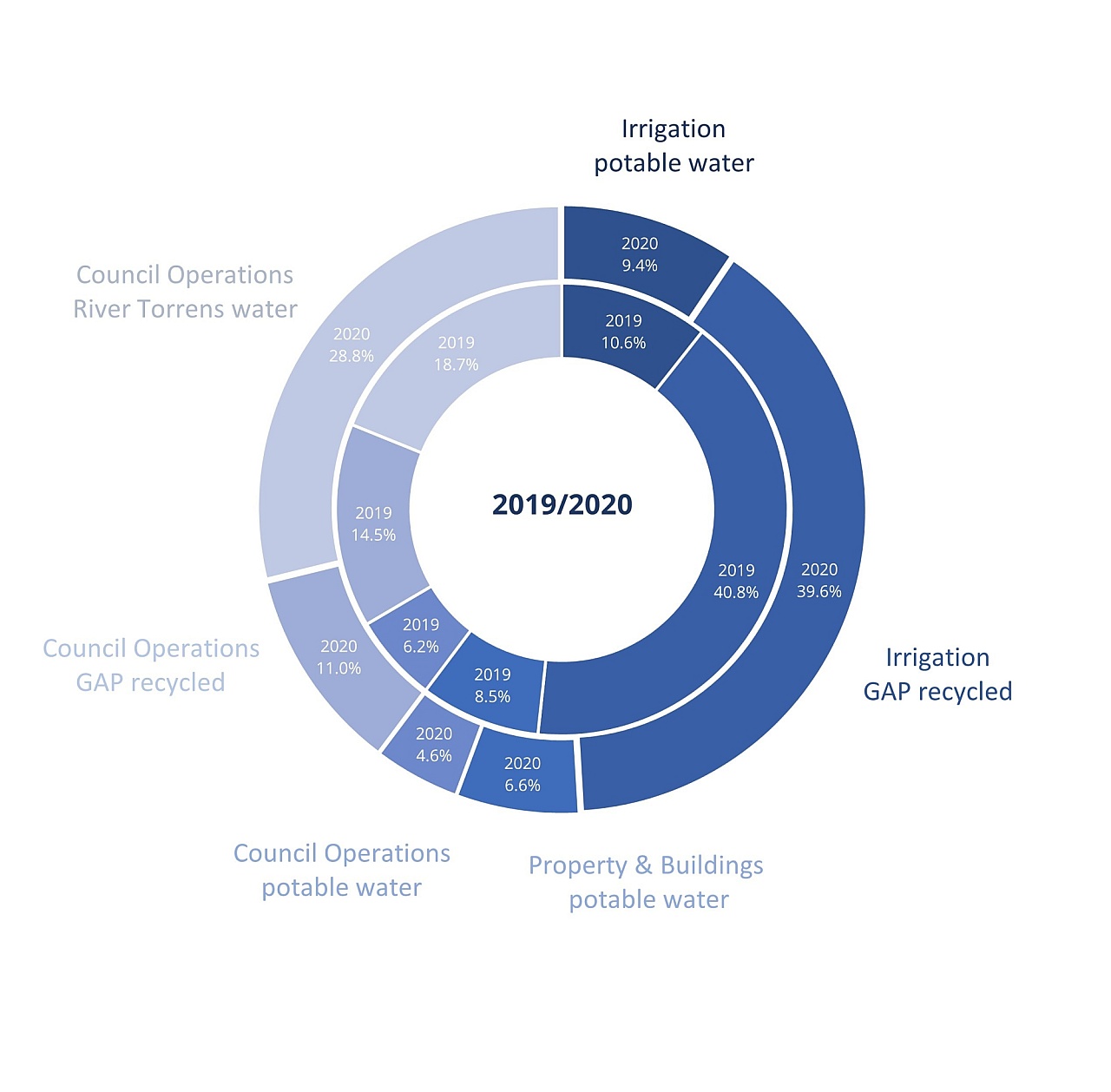Water sensitive city
Ensuring our water resources are managed and used wisely.
Water is one of our most precious resources. Living in the driest state on the driest inhabited continent, we need to ensure that our water resources are used wisely and that we support the ecological functions of our landscapes to thrive in the face of a changing climate.
As Adelaide’s populations grow, our waterways and coastal waters are threatened by pollution, overuse and periodic drought. This, in turn, affects the liveability of Adelaide and North Adelaide.
Where does Adelaide’s water come from?
At any time, water used by homes and business in Adelaide may come from a range of sources, depending on for what and when it is being used. These include mains water, local Adelaide Hills reservoirs, River Murray, desalination, the Glenelg to Adelaide Recycled Water Scheme (GAWRS), harvested rainwater, groundwater aquifers accessed through bores and River Torrens/ Karrawirra Pari.
Restoring healthy natural waterways
At the time of its establishment in 1836, Adelaide city was sited along the banks of the River Torrens. It was a flowing, ephemeral waterway, critical for supporting the expanding European colony. The River Torrens catchment area spans from what is today known as Mt Pleasant in the Adelaide Hills to West Beach at the coast, where it captures seasonal winter rains from at least six creeks.
In the South Park Lands, the Park Lands Creek also flows into the Keswick Creek and forms part of the Brown Hill Keswick Creek system, which discharges into the Patawalonga Catchment and onwards towards Glenelg.
Over the years, the creeks and waterways in Adelaide have been modified along their entire lengths to protect homes from flooding, sustain farmlands, create reservoirs and drain away waste from industries. In some places, houses have been built over the original creek after it was diverted into a large open channel drain.
Councils across Adelaide continue to modify watercourses, but we now install gross pollutant traps (GPTs), reinstate wetlands and stabilise the banks of waterways with native vegetation in continued efforts to improve the way water is managed in our urban environment.
The City of Adelaide aims to improve biodiversity in the river by managing levels of blue-green algae and carp, as well as reintroducing macrophytes (water plants) into the system.
Planning to be water sensitive
The City of Adelaide’s planning for water considers every part of the water cycle including social, environmental and economic outcomes. A Water Sensitive City Action Plan was endorsed by Council to continue our vision towards becoming a water sensitive city.
We are also working with Water Sensitive SA to progress this vision. A key part of this process has been involved with the Cooperative Research Centre for Water Sensitive Cities (CRCWSC), which has developed a Vision and Transition Strategy for water sensitive Adelaide.
Water sensitive urban design (WSUD)
Careful planning and design integrate the management of the water cycle into urban development. This is known as water sensitive urban design (WSUD) and is practised by the City of Adelaide to mitigate the impacts of climate change and urban development.
WSUD incorporates all water resources including stormwater, rainwater, drinking water, groundwater and wastewater. Examples include:
- rainwater harvesting and reuse across urban greening areas
- wastewater recycling, such as Council’s GAWRS scheme (see below)
- water conservation measures
- projects to minimise stormwater pollution, such as wetlands and rain gardens.
To learn more about WSUD visit Water Sensitive SA and Resilient East for Eastern Adelaide.
Glenelg to Adelaide Recycled Water Scheme (GARWS)
The Glenelg to Adelaide Park Lands Recycled Water Scheme (GARWS) delivers a sustainable supply of recycled water to the city and is used to irrigate over 163 hectares of Park Lands. Using recycled water means we drastically reduce the amount of mains water used from Adelaide’s reservoirs.
Recycled water is used in Council buildings as they upgrade existing facilities. The toilets in Victoria Square/ Tarntanyangga and club rooms in Victoria Park use GARWS water and more facilities will be connected over time.
Smart water use
Council water use
Part of the City of Adelaide’s sustainability goals is to produce a Water Profile to document how Council is using water, which forms a broader Integrated Water Management Measure. An annual inventory of the sources and volume of water used across all council operations is produced. The breakdown of water use in 2019 / 20 is shown below:

What can you do?
There are many simple steps you can take to reduce the amount of water used in your home and garden and business.
Roofs and other hard exterior surfaces act as water catchment areas. You can collect and store water from your roof. Funding to eligible applicants for the purchase of rainwater tanks is just one of the many incentives available to households and businesses through the City of Adelaide’s Incentives for Sustainability.